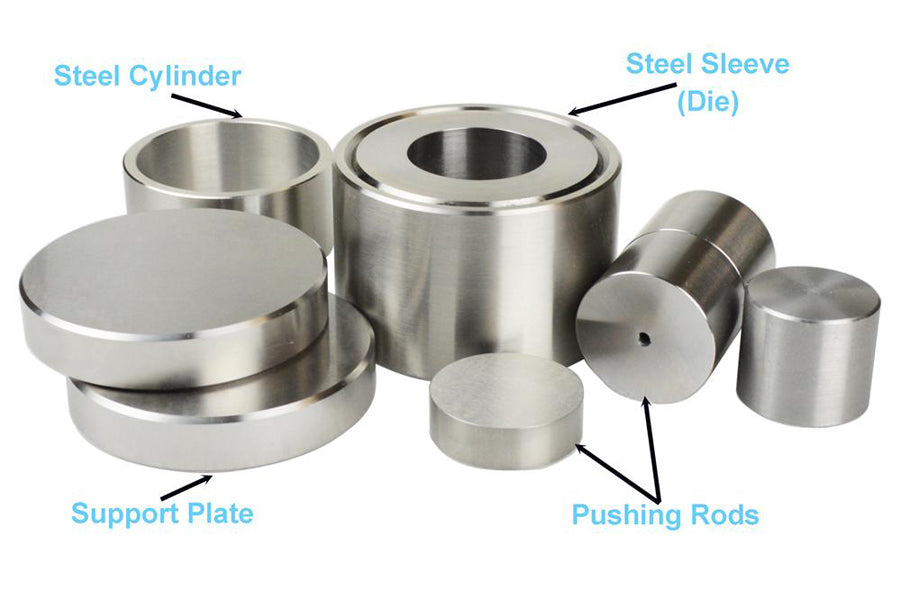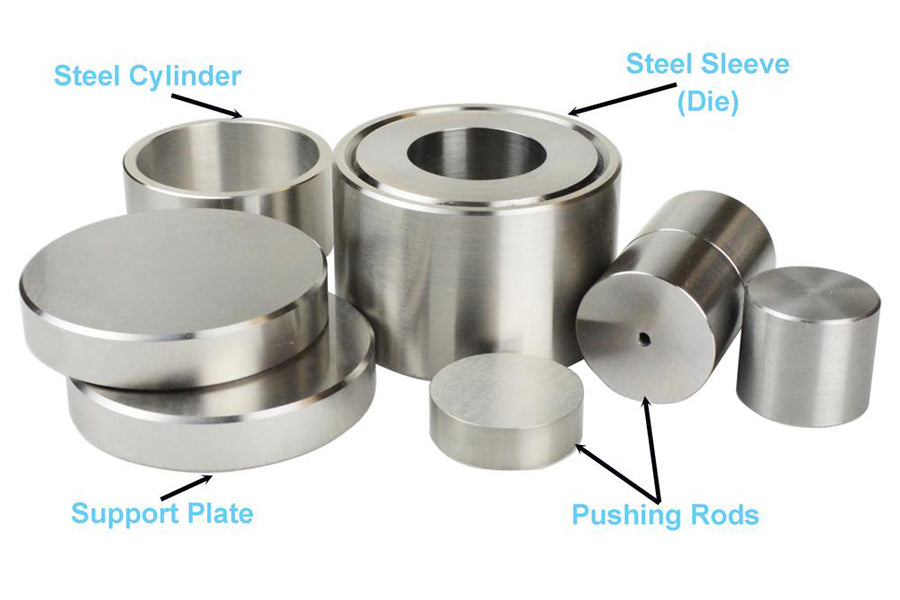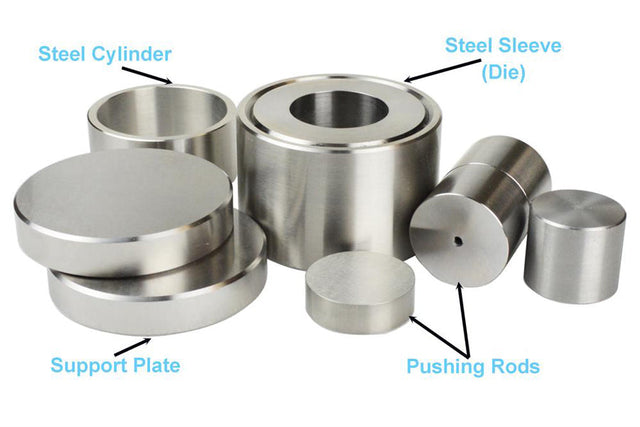MTI | SKU:
DIE25D
1" Diameter (I.D.) Dry Pellet Pressing Die - EQ-Die-25D
€592,59
Unit price
/
Unavailable
Couldn't load pickup availability
Delivery and Shipping to EU
Delivery and Shipping to EU
We will add in the quotation, the shipping, insurance, customs clearance costs.
1" Diameter (I.D.) Dry Pellet Pressing Die - EQ-Die-25D
MTI
EQ-Die-25D is a Complete pressing die with 1.0 " I.D. that is ready for you to make a 25 mm diameter sample pellet.
SPECIFICATIONS:
| Model | EQ-Die-25D |
| Die Sleeve Height | 2" (50 mm) |
| Outer Diameter | 2.48" (63 mm) |
| Inside Diameter | 1.0" ( 25.4 mm) |
| Weight | 7.0 Lbs |
| Maximum Load | 48 metric Ton (at room temperature) 930 MPa |
| Max. Working Temperature | RT - 250°C |
The whole set pressing die includes |
|
Pressing die installation schematic |
 |
| Instruction Video | |
Cautions  |
|
| Application Notes |
|
Steps to make a sample pellet |
|
| Warranty |
|
Related Products
 Pressing Die 1/8" - 3" |
Powder grinding & Mixing |
Drying Ovens |
Calcining & Sintering |
 Hydraulic Press |
CIP - Cold Isostatic Press |





